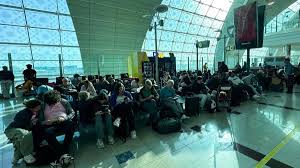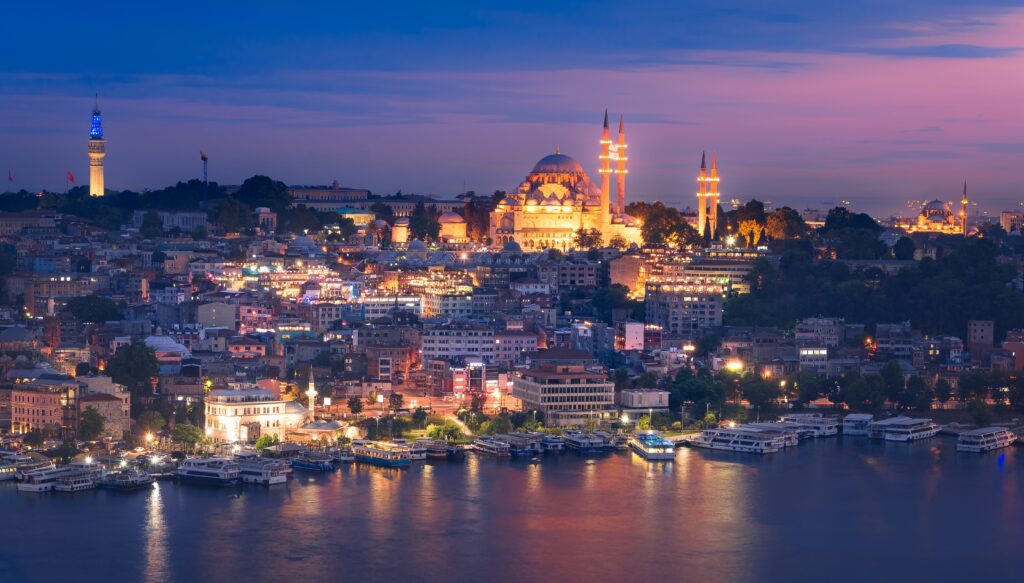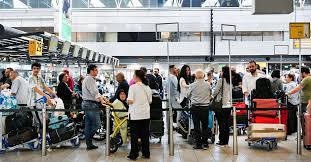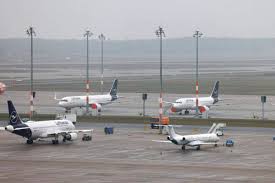
Ronan O’Connell
The UK’s longest-serving monarch, Queen Elizabeth II, died peacefully at Balmoral Castle in the Scottish Highlands on Thursday. But while her 70-year reign may have ended, visitors to London can enjoy a number of sites linked to her remarkable life.
Queen Elizabeth II dies — follow the latest news as the world mourns
While there’s no official Queen Elizabeth walking trail yet, unlike London’s 11-kilometrePrincess Diana Memorial Walk, here are six locations in the city embedded with memories of the late monarch.
Berkeley Square
:quality(70)/cloudfront-eu-central-1.images.arcpublishing.com/thenational/R4GB47SAMNC35ADNQFBZOLQ4LY.jpg?w=810&ssl=1)
Just north of Buckingham Palace sits an attractive green space popular with tourists seeking somewhere to rest amid a day of sightseeing. Ringed by graceful London planetrees up to 200 years old, Berkeley Square is in the middle of Mayfair, one of London’s ritziest neighbourhoods.
Almost a century ago, visitors to this shady haven may have caught a glimpse of the little girl who would become queen. Then Princess Elizabeth, she was born in a plush townhouse at 17 Bruton Street, a mere 50 metres from that square. Her parents, who would later become King George VI and Queen Elizabeth, occasionally took their daughter to get some fresh air in Berkeley Square. The home where she was born still stands and is now marked by a blue plaque, in front of which tourists often pose for photos.
Buckingham Palace
:quality(70)/cloudfront-eu-central-1.images.arcpublishing.com/thenational/RDWXBMPXSJDJDM6B2BQOYPWDSU.jpg?w=810&ssl=1)
Arguably the world’s most famous palace, this colossal building looms large over central London. Buckingham Palace was one of Queen Elizabeth’s official residences, along with Balmoral and Windsor Castle. For seven decades, the many people who gathered outside this palace on a daily basis had an easy way to know if the Queen was there or not. If the Union Flag was flying outside, it meant she was away, while the presence of the red, blue and yellow Royal Standard flag indicated she was home.
At certain times of year, tourists can venture inside the palace and explore its spectacular State Rooms or wander through the gardens. Even when it is closed to visitors, Buckingham Palace still attracts crowds of tourists who come to admire this stately structure.
Westminster Abbey
:quality(70)/cloudfront-eu-central-1.images.arcpublishing.com/thenational/LL6JBP6A3BEJLLXOKONT4FCMVY.JPG?w=810&ssl=1)
After Buckingham Palace, no one location is as intrinsically linked to Queen Elizabeth as the magnificent Westminster Abbey. More than 1,000 years old, this Gothic church is a major tourist attraction and visitors can absorb its splendour during regular 90-minute guided tours.
Westminster Abbey is also the setting for many of the most significant moments of her life. It was here, in 1947, in the abbey’s palatial main hall, that she was married to Philip Mountbatten in one of the most lavish weddings the world had ever seen.
Six years later, she became Queen Elizabeth II and her husband became Prince Philip, after her royal coronation. That grand ceremony also took place at Westminster Abbey, which has been the site of every British coronation since 1066.
Those celebrations will contrast against the sombre event of Queen Elizabeth’s funeral, which is expected to be held at Westminster Abbey, most likely on September 19. She will then be laid to rest in the King George VI Memorial Chapel, within St George’s Chapel at Windsor Castle, alongside her father, mother, sister Princess Margaret and husband Prince Philip.
Victoria and Albert Museum
:quality(70)/cloudfront-eu-central-1.images.arcpublishing.com/thenational/P2JYIQIZBVGNDHKBFTQNYF3KDA.JPG?w=810&ssl=1)
For 70 years, Queen Elizabeth II presided over the Royal Collection, the world’s largest private art collection, owned by the British Royal family. This monumental assemblage features more than one million items, ranging from paintings to ceramics, tapestries, books, furniture, sculptures, jewellery, timepieces, musical instruments, weapons and manuscripts.
More than 15,000 of these objects are displayed at about 150 museums and galleries across the world. The largest exhibits from the Royal Collection are displayed at London’s British Museum, National Gallery and the incredible V&A, one of Europe’s finest cultural facilities.
St Paul’s Cathedral
:quality(70)/cloudfront-eu-central-1.images.arcpublishing.com/thenational/EFA25BV2MBCGZLN3JRQOSRHVGE.jpg?w=810&ssl=1)
On July 29, 1981, Queen Elizabeth was in the foreground of one of the most famous weddings in history, between her son Prince Charles and Princess Diana, at London’s exquisite St Paul’s Cathedral. So enormous was this event that 600,000 people lined the streets of London and an incredible 750 million watched the wedding around the world on television.
It was fitting, then, that this wedding was held inside one of the largest religious structures in all of Europe. Standing 111 metres tall, St Paul’s Cathedral was the highest building in London for more than two centuries, until the 1960s. Thanks to its astonishing size and majestic Baroque architecture, this cathedral is a magnet for tourists.
Palace of Westminster
:quality(70)/cloudfront-eu-central-1.images.arcpublishing.com/thenational/I3NTX76FLZGRXHB6AUDNJPBNGY.jpg?w=810&ssl=1)
Rather than being a royal abode, like London’s Buckingham Palace or Kensington Palace, the Palace of Westminster is the home of the British Parliament. In all but three of her 70 years on the throne, Queen Elizabeth completed the annual Queen’s Speech, an address to the House of Lords in the Palace of Westminster that marked the State Opening of Parliament.
This giant and ornate neo-Gothic building, opposite Westminster Abbey on the banks of the River Thames, is one of the most photographed sites in London, thanks in part to its world-famous clock tower, Big Ben. Visitors can also take tours of the Houses of Parliament to see British democracy in motion.
The post London sites most famously associated with Queen Elizabeth II appeared first on The Frontier Post.








